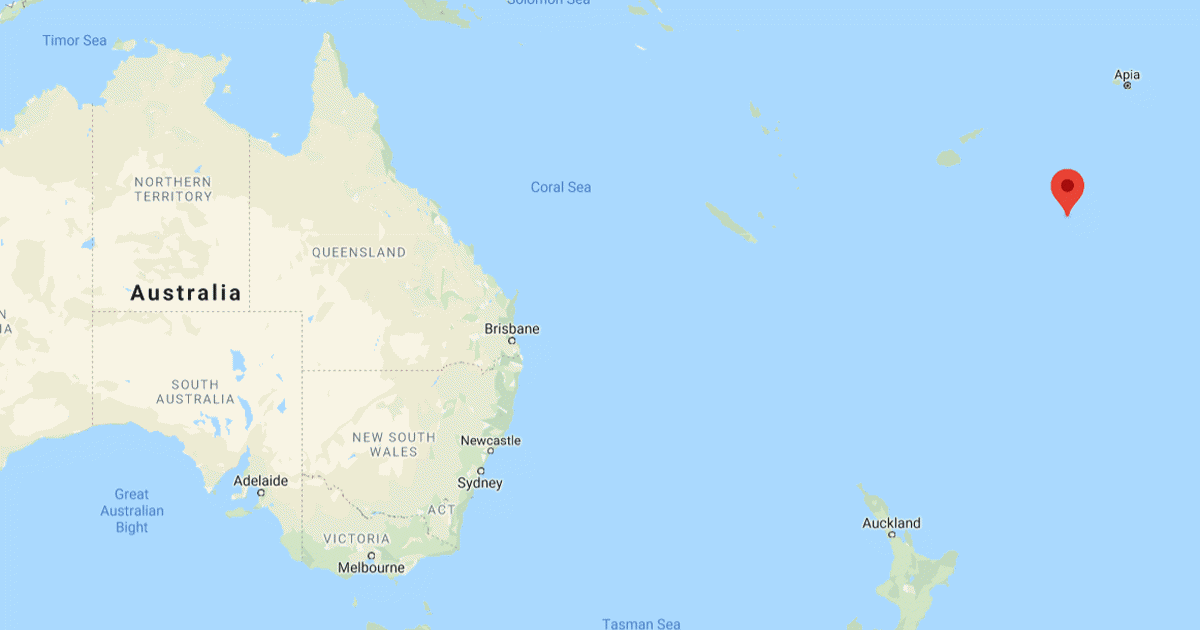
Image: Google Maps
The Australian Government has kicked in another $2.9 million for new renewable energy infrastructure in the Polynesian kingdom of Tonga.
The kingdom of Tonga, home to around 103,000 people, consists of more than 170 islands and is situated approximately 3,200 kilometres from the closest point in Australia.
Like many island nations Tonga has been heavily dependent on expensive and polluting diesel-based power generation, but has its sights set on achieving a target of generating 70% of all electricity from renewable sources by 2030.
Australia’s latest funding is being provided via the Asian Development Bank-led Outer Islands Renewable Energy Project (OIREP), which is bringing solar power and energy storage to the islands of ‘Uiha, Nomuka, Ha’ano, Lifuka, Ha’afeva, ‘Eua, Vava’u, Niuatoputapu and Niuafo’ou; plus also upgrading electricity networks on ‘Eua and Vava’u.
“It is important we support Tonga to be self-sufficient and resilient,” said Australia’s High Commissioner to Tonga, Adrian Morrison. “OIREP means Tongans living on outer islands will have reliable access to affordable energy to enable work, education, and home life.”
Australia And OIREP
This new funding brings Australia’s total contribution to OIREP to $9.5 million since 2013.
Other solar projects Australia has supported under the OIREP initiative include the 550kW Ha Masani Solar Facility on Ha’apai, which incorporates 660 kWh of battery storage. Australia has also assisted with the 200kW Huelo ‘o e Funga Fonua solar facility on the island of ‘Eua.
The ‘Eua project, which included upgrades to poles, wires and other network components, has already been severely tested. Cyclone Gita, the most powerful tropical cyclone to impact Tonga since reliable records began, devastated the country’s infrastructure in 2018. Australia’s Department of Foreign Affairs and Trade says a complete recovery of all electricity systems on ‘Eua took two weeks with a crew of three people. That may seem like a long time, but on the country’s main island of Tongatapu, complete recovery took five weeks with a crew of 150 people.
“Australia’s support to transition communities to solar power is to helping increase the resilience of Tonga’s energy system so communities can recover more quickly after disasters,” states DFAT.
But an ounce of prevention is worth a pound of cure. As well as providing more resilient electricity to infrastructure to Tonga, solar power plays a special symbolic role as the kingdom and other low-lying island nations around the world battle the increasing impacts of climate change.

 RSS - Posts
RSS - Posts



I was in Tonga for 18 months teaching at a Tertiary College (TAFE equivalent), and then on a short assignment specifically researching Domestic and small Commercial and Institutional (College) PV Renewables.
This Australian assistance is going to the smaller outlying islands, which is good but ignores the proverbial elephant in the room. The main island Tongatapu has about 70% of the total population (about 70,000 people) and the main town (and ‘Capital’) Nuku’alofa has a population of about 35,000.
On the main island there is very little domestic scale solar, for various reasons, but a major one is the ‘gross metering’ feed in tariff (FIT) of only 26.6 seniti (~17.4c Aust) (FIT is linked to price of diesel fuel so varies up and down).
Supply tariff also varies but has been around 79.9 seniti (came down from 81.2 in March 2019) (~52.2c Aust). (There are no other charges such as fixed ‘connection’ fees.)
The simple calculation on this is that if all the power produced by solar PV has to be sold to the grid for 17.4c and then own use bought back at 52.2c then you would need to produce 3 times as much power than the amount being consumed to have a zero power bill. (It is slowly heading in the right direction – up until recently the factor was 4 times)
By any global understanding of ‘gross metering’ this is a strange situation and a fabulous disincentive for small business, a Tertiary college or ordinary domestic solar.
There may be some benefits for a Pacific island to have a centralized power system, and discourage domestic solar, when half the roofs may fly off in a Cyclone. The scale of the project to go fully renewable is not very difficult and is actually happening more or less on target. The downside is that energy for domestic use may always be expensive because the power company can set its own price.